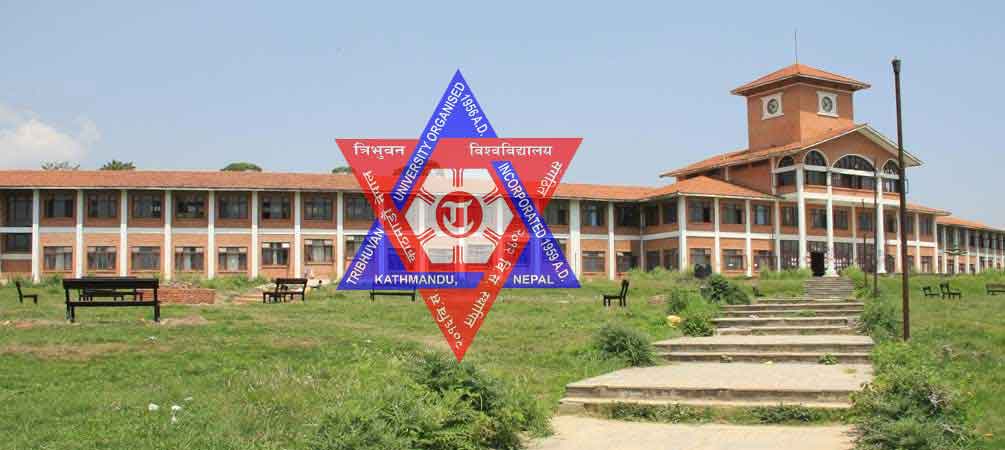
TU Land Grants: Missing Records and Encroachment
While facts about land encroachment and boundary violations related to Tribhuvan University (TU) continue to surface, some plots originally granted for TU’s establishment have yet to be identified on the ground.
Background on Early Site Studies (2013 BS)
In 2013 BS, sites were studied for TU’s establishment at Lubhu in Lalitpur; Chhauni, Swayambhu, and Maharajgunj in Kathmandu; and Nagarkot in Kavre. Records indicate that Kanti Rajyalaxmi Shah and Ishwari Rajyalaxmi Shah (Queen Mothers) granted 375 ropani of private birta land at Lubhu for the university. However, where this land now lies and who currently occupies it remain unknown.
Findings Reported in 2081 BS
The Report of TU’s Land and Immovable Property Inquiry Committee, 2081 brought these issues to light. A contemporaneous news item in Gorkhapatra Daily dated 2013 Ashadh 17 reported the Queen Mothers’ land grant. The committee notes, citing TU’s own institutional history volume (2016–2020), that the University Commission inspected the proposed area on 2013 Baisakh 2 “to understand the ground reality of the area said to have been granted to TU.”
Technical Details on the Lubhu Site
The committee clarifies that TU’s history book records technical planning for essential water supply from Godavari Khola, Dhungemati, Gopaldol, and Shri Dhungmati, including pipeline distance calculations. It states that the granted land lies 3.5 miles northwest of Godavari Naudhara, with Gundumati located 1.5 miles to the southwest corner.
The Commission meeting at Narayanhiti on 2013 Ashadh 14 concluded that a residential university could be established on that land and decided to place the land under university use. Multiple records confirm this. Despite local assistance during last year’s site visit to Lubhu, the committee could not definitively verify the exact plot.
Survey and Tenancy Records
According to the Lalitpur Survey Office field book, farmers were cultivating various plots in former Lubhu Panchayat Ward No. 9 (A). Based on the Falgun 2021 BS survey, evidence was found that the land was recorded in the Watan Mahal register as the Queen Mother’s private birta land, alongside the names, surnames, and domiciles of tenant-farmers.
Committee member Ballabh Adhikari further stated that tenant declarations also recorded the land as the Queen Mother’s birta, with farmers noting they had cultivated it as jot (tenant tillage).
Status and Next Steps
Given these facts, the committee judged that pinpointing the land’s geographic location would still require more time. However, its term expired before completion. The committee recommends that TU form a separate inquiry committee for further study.
Kapan Land Donated in Memory of Vidwat Shiromani Hem Raj Sharma
The committee also found TU officials were unaware of land donated at Kapan, Kathmandu in memory of Vidwat Shiromani Hem Raj Sharma by his son Keshariraj Pandey and daughter-in-law Kiran Kumari Pandey. Records indicate a grant of 29 ropani 8 anna, Kitta No.: 19, located in Kapan Village Panchayat Ward No. 7 (A).
Executive Decision and Implementation Gap
Decision No.: 1846 of the TU Executive Council (2046 BS) approved accepting the donated land by arranging the lalpurja (title deed), obtaining the relinquishment, and registering transfer per purchase/ownership documents. The committee concludes that the Administration Division did not prioritize implementing the Executive Council’s decision.
The committee coordinated with the Malpot (Land Revenue) Office, Chabahil. When the land did not appear in computer records, it officially requested a search in old ledgers. The committee’s term ended during this process, preventing further verification. It recommends that TU constitute a separate committee to continue the investigation.
Earlier Committee on Asset Management (2072 BS)
On 2072 Chaitra 4, TU formed a committee led by Professor Anup Kumar Shrestha to study property collection, protection, and management. That committee highlighted problems stemming from a lack of policy, rules, and coordination, and from insufficient skilled personnel, which hindered record-keeping and archiving.
Tribhuvan University TU Notices

